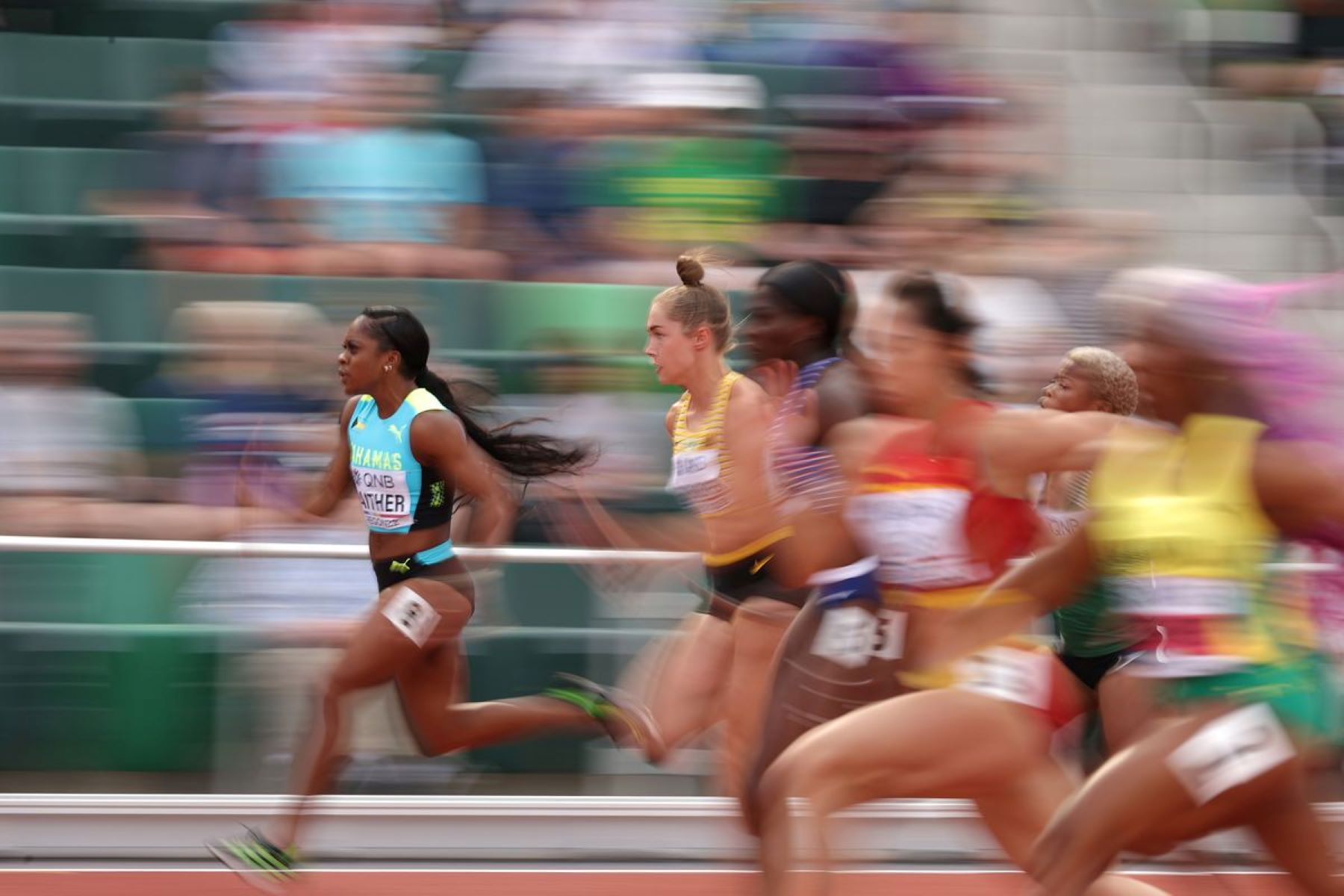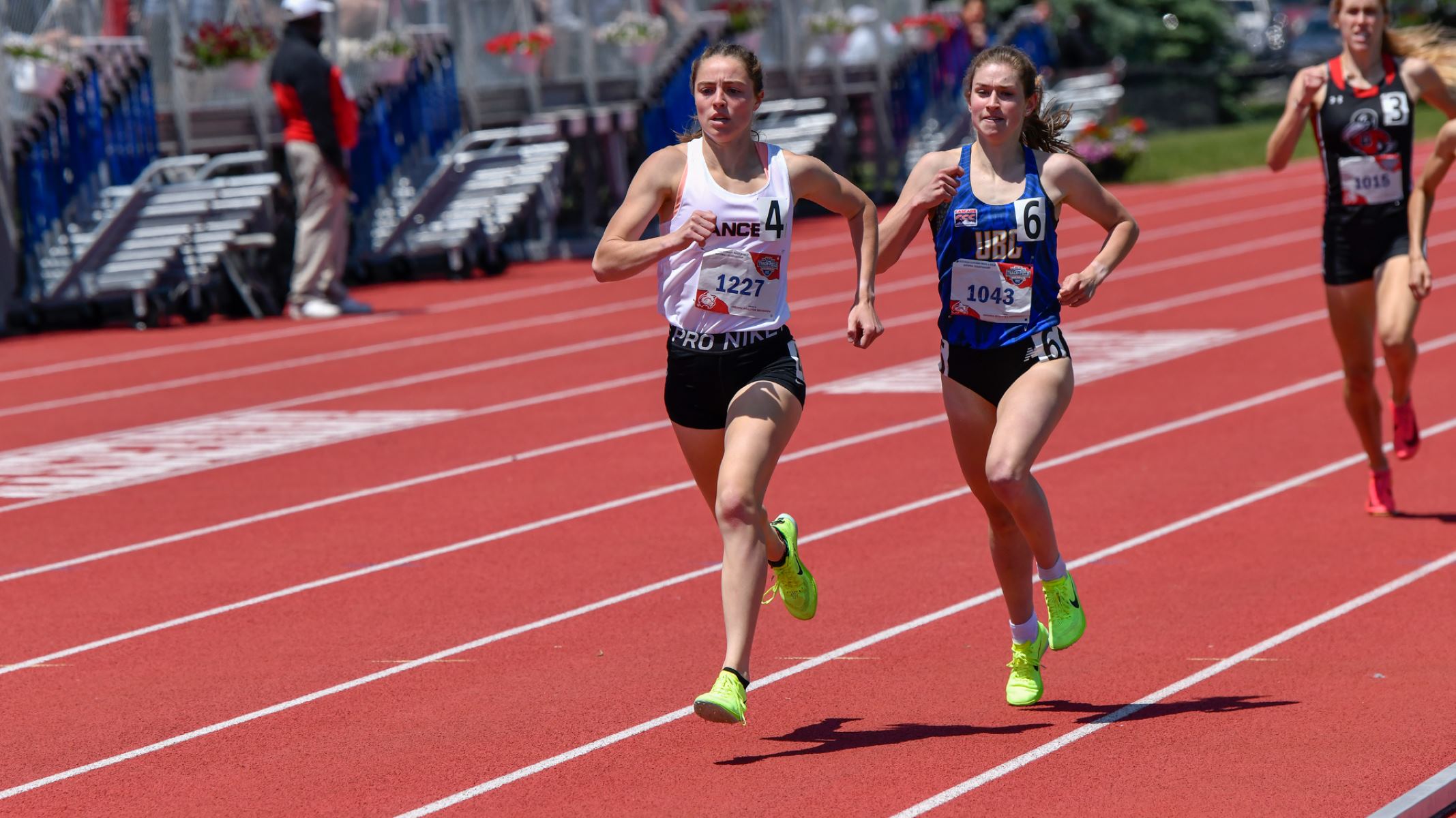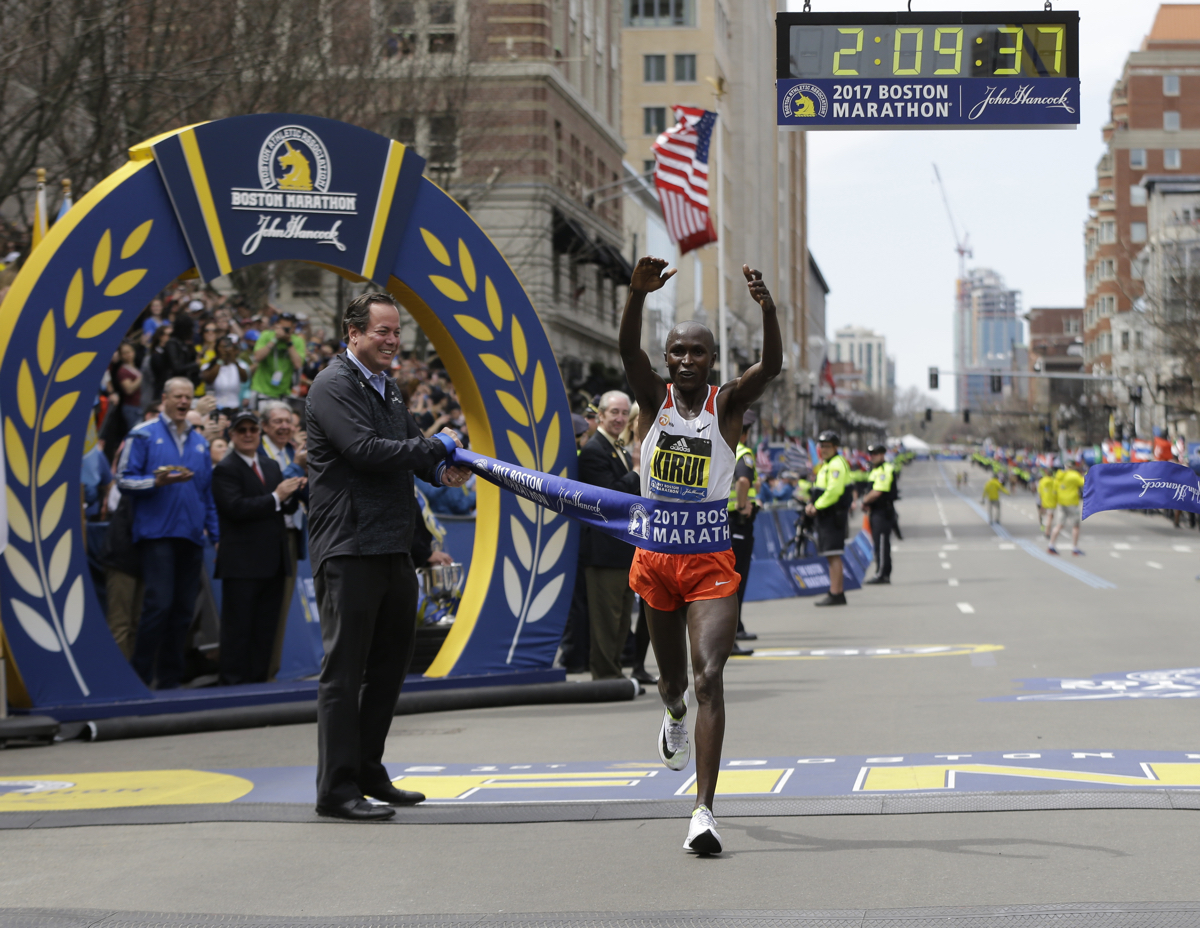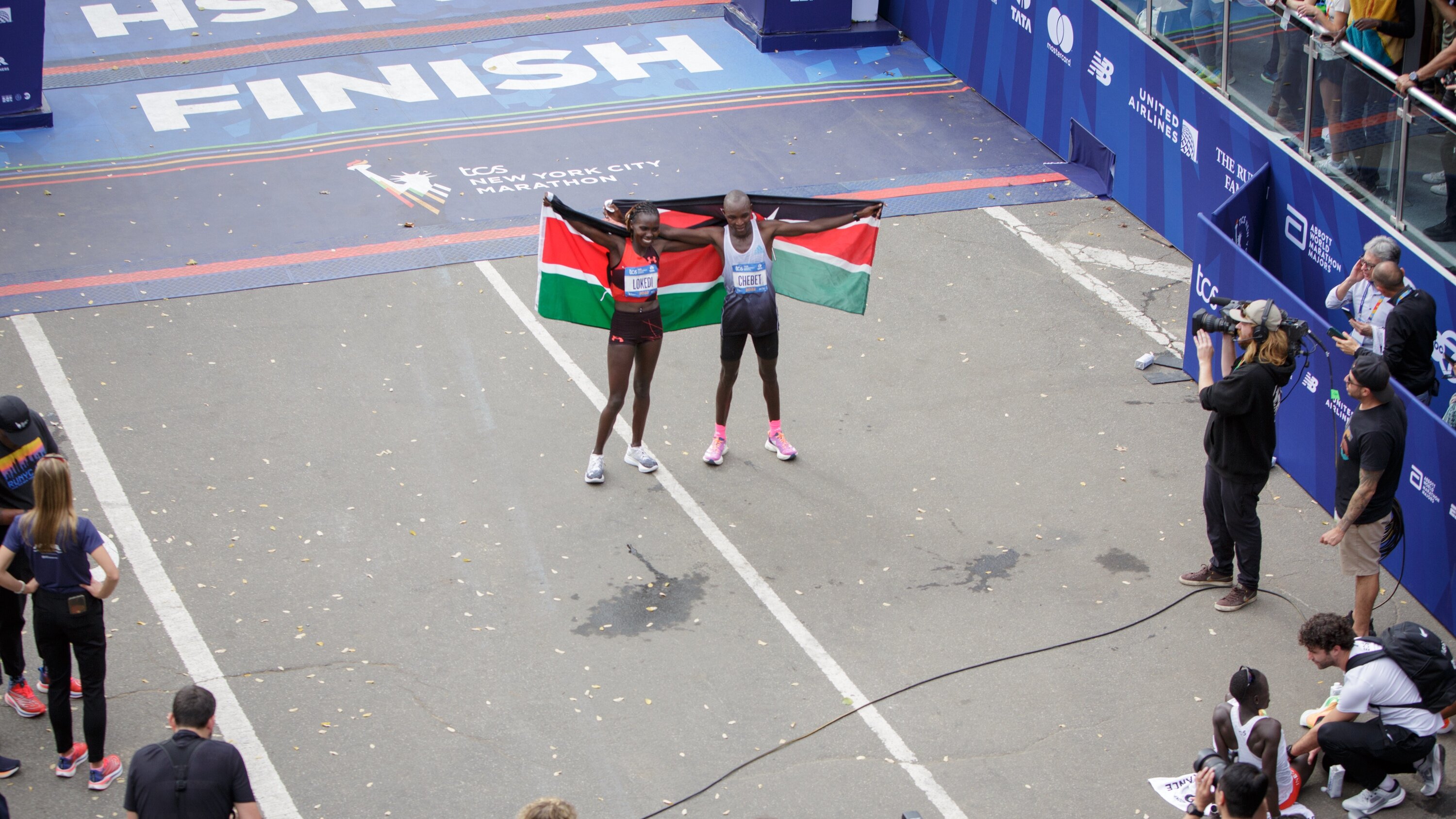

Featured
How Are Track And Field Athletes Paid
Published: September 4, 2023
Discover how track and field athletes are paid in this featured article. Explore the various compensation models and find out how these athletes earn a living.
Introduction
Track and field athletics have been a popular and prestigious sport for centuries, captivating audiences with its blend of speed, strength, and finesse. Athletes who participate in track and field events are not only renowned for their athleticism but also for their incredible dedication and discipline.
However, the question of how track and field athletes are paid often remains a mystery to many. Unlike team sports like basketball or football, track and field athletes often compete individually rather than as part of a team. This difference in structure brings about unique challenges and opportunities when it comes to monetizing their talents.
In this article, we will explore the various sources of income for track and field athletes, shedding light on the financial aspects of the sport. From prize money and sponsorship deals to endorsements and appearance fees, track and field athletes have a range of opportunities to earn income and support their athletic careers.
It is important to note that payment structures in track and field can vary significantly depending on the level of competition, an athlete’s performance, and their popularity. While the top-tier athletes may enjoy substantial earnings, those who are just starting or competing at a lower level may have more limited financial opportunities.
With this in mind, let’s delve into the different avenues through which track and field athletes receive payment and support, and gain a better understanding of how their hard work and dedication translate into tangible rewards.
History of Track and Field Athletics
The history of track and field athletics dates back to ancient times, with the sport having deep roots in ancient Greece. The ancient Olympics played a significant role in the development and popularization of track and field, as athletes from different city-states gathered to compete in various athletic events.
Track and field events have evolved considerably over the centuries, with new events being added and older ones modified or discontinued. The first recorded track and field competition took place in 776 BCE, featuring events such as the stadion race (a sprint over a distance of about 200 meters), wrestling, and long jump.
Over time, the range of events expanded to include middle-distance races, such as the 800 meters and the 1500 meters, as well as long-distance races like the marathon. Field events, such as the shot put, discus throw, high jump, and pole vault, were also integrated into the sport.
The modern era of track and field athletics began in the late 19th century, with the establishment of international governing bodies, such as the International Association of Athletics Federations (IAAF). The IAAF, now known as World Athletics, was founded in 1912 and has played a crucial role in organizing and regulating the sport ever since.
Today, track and field athletics hold a prominent place in both the Olympic Games and various international competitions. From the legendary performances of athletes like Usain Bolt and Carl Lewis to the groundbreaking achievements of female athletes like Wilma Rudolph and Florence Griffith Joyner, track and field has consistently captivated audiences around the world.
Moreover, the sport continues to evolve, with new records being set, and new athletes emerging as essential figures in the track and field community. The sport’s rich history serves as a testament to the enduring popularity and importance of track and field athletics.
Sources of Income for Track and Field Athletes
Track and field athletes have multiple sources of income that contribute to their financial stability. These income streams are essential for covering their training expenses, living costs, and supporting their athletic careers. Here are some of the key sources of income for track and field athletes:
- Prize Money: Winning prize money is one of the primary ways track and field athletes earn income. Competitions at various levels, including local, national, and international events, offer prize money to top-performing athletes. The amount of prize money can vary significantly depending on the level of competition and the specific event.
- Sponsorship Deals: Many track and field athletes secure sponsorship deals with sportswear brands, equipment manufacturers, and other companies. These sponsorship deals can provide financial support, as well as access to training facilities, coaching, and other resources. High-profile athletes with a strong track record and a large following often attract lucrative sponsorship deals.
- Endorsements: Track and field athletes with a significant public image and influence may also earn income through endorsement opportunities. They might be approached by companies to promote their products or services, appearing in advertisements, and endorsing brands in exchange for a fee.
- Appearance Fees: Some track and field athletes receive appearance fees for participating in specific events or meets. These fees can come from organizers who are eager to attract top athletes and increase the prestige of their competitions.
- Government Grants and Funding: Depending on the country, track and field athletes may be eligible for government grants and funding programs aimed at supporting elite athletes. These grants can help cover training expenses, travel costs, and living expenses, providing vital financial assistance to athletes pursuing their athletic dreams.
- Grants and Scholarships: Universities, sports associations, and athletic foundations often offer grants and scholarships to talented track and field athletes. These financial awards can cover education expenses, training costs, and additional support, allowing athletes to combine their academic pursuits with their athletic careers.
- Other Income Opportunities: Track and field athletes can explore additional income opportunities, such as coaching, sports clinics, public speaking engagements, and television appearances. Utilizing their expertise and experience, athletes can leverage these opportunities to generate income alongside their competitive pursuits.
It is important to note that the income potential varies greatly among track and field athletes. Top-ranked athletes, world record holders, and Olympic champions often earn significant incomes from a combination of these sources. On the other hand, emerging athletes or those competing at lower levels may rely more on grants, scholarships, and part-time jobs to support their training and expenses.
These various sources of income play a crucial role in enabling track and field athletes to continue their training, compete at a high level, and achieve their athletic goals.
Prize Money in Track and Field Competitions
Track and field competitions offer prize money as a form of financial reward for athletes based on their performance. The amount of prize money varies widely depending on the level of competition, the event, and the athlete’s performance. Here’s a closer look at prize money in track and field competitions:
Major Championships: International events, such as the Olympic Games, World Athletics Championships, and Continental Championships, offer substantial prize money for top-performing athletes. The prize money for these major championships can range from thousands to tens of thousands of dollars, typically awarded to athletes who finish in the top positions or achieve exceptional results.
Diamond League: The Diamond League is an annual series of elite track and field meetings held worldwide. It features a limited number of events in various disciplines and offers significant prize money to athletes who compete and perform well throughout the series. The total prize money for the Diamond League is typically in the range of millions of dollars.
National Championships: National track and field championships, held in countries across the globe, provide prize money for top athletes. These competitions often offer more modest prize amounts compared to major championships but are still an important source of income for athletes at the national level.
Other Competitions: Besides major championships and national championships, there are numerous other track and field competitions at the regional, collegiate, and local levels. These competitions may offer smaller prize amounts, but they provide valuable opportunities for athletes to gain experience, improve their performances, and earn some income.
The distribution of prize money in track and field competitions varies. Some competitions offer equal prize money for both men and women, fostering gender equity in the sport. However, there are still instances where prize money discrepancies exist between genders, with men receiving higher payouts in certain competitions.
It is worth noting that prize money does not solely depend on an athlete’s finishing position. Track and field competitions often have specific criteria for awarding prize money, such as meeting qualifying standards, achieving personal bests, or setting new records. These additional incentives can motivate athletes to aim for exceptional performances, pushing the boundaries of their capabilities and contributing to the overall excitement of the sport.
Prize money in track and field competitions plays a significant role in financially supporting athletes, particularly those competing at the highest level. It rewards athletes for their dedication, hard work, and exceptional performances, while also serving as an incentive for continued improvement and participation in future competitions.
Sponsorship Deals for Track and Field Athletes
Sponsorship deals are a critical source of income and support for track and field athletes. These deals involve partnerships with various brands, sportswear companies, and corporate sponsors, providing financial assistance and valuable resources to athletes. Here’s an in-depth look at sponsorship deals for track and field athletes:
Sportswear Brands: Many track and field athletes secure sponsorship deals with sportswear brands, such as Nike, Adidas, Puma, and Under Armour. These partnerships often include financial support, as well as the provision of training gear, footwear, and apparel. Athletes benefit from accessing the latest sports technology and high-quality equipment, enabling them to enhance their performance and represent the sponsor’s brand during competitions.
Equipment Manufacturers: In addition to sportswear brands, athletes may also form partnerships with equipment manufacturers. These include companies that specialize in producing track and field equipment, such as javelins, pole vault poles, and discus throws. These partnerships can involve financial support, the provision of equipment, and opportunities for athletes to contribute to the research and development of new products.
Corporate Sponsors: Beyond sportswear and equipment companies, track and field athletes may secure sponsorship deals with corporate sponsors from a wide range of industries. These partnerships can offer financial support, access to additional training facilities, and exposure to networking opportunities. Corporate sponsors may also provide mentorship programs, career development guidance, and assistance with the athletes’ personal and professional branding.
Select Athlete Programs: Certain sportswear brands and corporate sponsors have select athlete programs that offer support and sponsorship to a select group of elite track and field athletes. These programs often come with financial benefits, enhanced exposure, and specialized training and development resources. They recognize and invest in athletes who show exceptional potential, talent, and commitment to their sport.
Global Ambassadors: Track and field athletes who achieve worldwide fame and recognition may be appointed as global ambassadors for sportswear brands or corporate sponsors. As global ambassadors, athletes represent the brand on a larger scale through media appearances, promotional events, and marketing campaigns. These partnerships can lead to substantial financial rewards and provide athletes with opportunities to become influential figures in the sport.
Sponsorship deals are typically negotiated and managed by the athlete’s management team, which may include agents or sports marketing agencies. These professionals help athletes secure sponsorship partnerships, navigate contract agreements, and maintain positive relationships with sponsors.
It’s important to note that securing sponsorship deals often requires a combination of athletic talent, performance achievements, marketability, and personal branding. Athletes who consistently perform well, demonstrate a strong social media presence, and engage with the public and fans tend to attract more sponsorship opportunities.
Sponsorship deals not only provide vital financial support to track and field athletes but also offer access to valuable resources, training facilities, and professional guidance. These partnerships contribute to the overall growth and development of athletes, both on and off the track, helping them pursue their dreams and reach new heights in their athletic careers.
Endorsements for Track and Field Athletes
Endorsements play a significant role in the income and brand recognition of track and field athletes. These endorsement deals involve athletes promoting and endorsing products, services, and brands, often appearing in advertisements or promotional campaigns. Let’s explore the world of endorsements for track and field athletes:
Brands and Products: Track and field athletes are often sought after by brands to endorse their products. This can include sportswear brands, fitness equipment, energy drinks, nutritional supplements, and more. Athletes who are recognized as experts in their field and have a strong presence in the media can attract endorsement deals from companies looking to align their brand with the athleticism and success of the athlete.
Apparel and Footwear: Athletes’ endorsements with sportswear brands often involve wearing specific apparel and footwear during training and competitions. These partnerships allow brands to connect their products with the performance and success of the athlete. Athletes may even have signature lines of sportswear and footwear developed in collaboration with their endorsing brand.
Health and Wellness: Track and field athletes, known for their commitment to fitness and healthy lifestyles, may endorse health and wellness products and services. This can include nutritional supplements, fitness trackers, gym memberships, and specialized training programs. Athletes are often seen as role models for fitness and can leverage their influence to promote products that align with their values and training regimens.
Charitable Causes: Many track and field athletes are involved in philanthropic endeavors and social causes, and they may endorse and promote charitable organizations or initiatives. By lending their name and support to a cause, athletes can raise awareness, generate donations, and make a positive impact in the community.
Role as Ambassadors: Some track and field athletes serve as ambassadors for multiple brands, representing them at various events and promotional activities. As brand ambassadors, athletes may participate in meet-and-greets with fans, engage in social media campaigns, or make public appearances on behalf of the endorsing brand.
Endorsement deals can be lucrative for track and field athletes, especially those who have achieved a high profile in the sport. The monetary value of an endorsement deal varies based on factors such as the athlete’s prominence, their performance record, their marketability, and the scope and duration of the endorsement agreement.
It is important for athletes to choose endorsement opportunities that align with their personal values and goals. Authenticity and credibility are key in maintaining a positive reputation and long-lasting relationships with endorsing brands and the public. Athletes must carefully consider the products, services, and companies they endorse and ensure that they genuinely believe in and use the endorsed products.
Endorsement deals not only provide financial benefits for athletes but also contribute to their personal brand development and exposure. Successful endorsements can elevate an athlete’s profile, increase their visibility, and open up opportunities for further partnerships and engagements.
Endorsements are a symbiotic relationship, benefiting both the athlete and the endorsing brand. Athletes gain financial rewards, increased visibility, and professional opportunities, while brands benefit from the association with the athlete’s athletic prowess, influence, and fan base. The world of endorsements continues to play a significant role in shaping the careers and financial success of track and field athletes.
Appearance Fees for Track and Field Athletes
Appearance fees are an additional source of income for track and field athletes, particularly for elite athletes who are in high demand for their participation in competitions, meets, and other events. Here’s a closer look at appearance fees for track and field athletes:
Participation in Elite Competitions: Top-tier track and field athletes often receive appearance fees for competing in prestigious elite events. These fees may be offered by event organizers aiming to attract high-profile athletes and enhance the overall quality and reputation of their competition. The amount of appearance fees can vary depending on the event’s prominence, the athlete’s performance record, and their popularity.
Special Meets and Exhibition Events: Track and field athletes may be invited to special meets or exhibition events, which are not part of the regular competition circuit but serve as promotional or entertainment events. These events often offer appearance fees to athletes as an incentive to participate and entertain the audience. Athletes may be asked to compete in unique formats, relay races, or demonstration events, adding excitement and variety to the traditional track and field experience.
Global Tours and Athletics Roadshows: Track and field athletes may be contracted for global tours or athletics roadshows, where they travel to different cities or countries to showcase their skills and engage with fans. These events may be organized by sports marketing agencies, sportswear brands, or local authorities. Appearance fees in such cases are paid for the athlete’s presence and participation in various activities, including demonstrations, clinics, meet-and-greets, and media engagements.
Promotional Campaigns and Product Launches: Athletes with a significant public image and influence may receive appearance fees for being featured in promotional campaigns or participating in product launches. This could involve attending press conferences, photo shoots, or media interviews on behalf of endorsing brands or companies. Appearance fees for these events compensate athletes for their time and the value they bring to the brand through their association and visibility.
Appearance fees are typically negotiated between the athlete’s management team and the event organizers or sponsoring entities. The negotiation process may take into account factors such as the athlete’s current ranking, their performance potential, their popularity among fans, and the athlete’s availability and willingness to participate.
It’s important to note that appearance fees are separate from any prize money or financial agreements related to the athlete’s participation in the event. Appearance fees serve as compensation for the athlete’s presence and involvement and are typically agreed upon in addition to any other financial arrangements or contracts.
Participating in events with appearance fees can be beneficial for athletes, as it provides them with additional income, exposure to new audiences, and opportunities to enhance their personal brand. Additionally, appearance fees recognize the value that top athletes bring to events by generating excitement, attracting spectators, and raising the profile of the sport.
However, it’s essential for athletes to carefully consider the balance between appearance fees and the demands on their schedule and training regimen. Finding the right balance ensures that athletes continue to prioritize their performance and remain focused on their athletic goals while taking advantage of the appearance fee opportunities that align with their career objectives.
Government Grants and Funding for Track and Field Athletes
Government grants and funding programs provide crucial financial support for track and field athletes, helping them cover training expenses, competition costs, and other essential needs. Here’s a closer look at the role of government grants and funding for track and field athletes:
Sport Development Agencies: Many countries have sport development agencies or national sports associations that offer grants and funding opportunities for athletes. These organizations aim to support elite athletes and nurture talent in various sports, including track and field. Athletes can apply for grants or scholarships based on their performance level, potential, and dedication to their sport.
High-Performance Programs: Government-funded high-performance programs support track and field athletes who demonstrate exceptional athletic ability and potential. These programs often provide financial resources, access to specialized coaching and training facilities, sports science support, and other valuable resources to help athletes reach their full potential. The selection process typically involves talent identification, performance evaluations, and athlete development plans.
Athlete Support Programs: Government agencies may offer financial assistance to track and field athletes through athlete support programs. These programs provide stipends, allowances, and scholarships to athletes who meet specific criteria, such as achieving performance standards, representing the country in international competitions, or maintaining academic requirements alongside their athletic pursuits. The support provided helps cover training, travel, and living expenses, easing the financial burden on athletes.
Education Support: Some governments provide education support programs for track and field athletes, ensuring that they can pursue their athletic dreams while also receiving an education. These programs may offer scholarships, grants, or funding opportunities specifically tailored to athletes balancing their academic studies with their training and competition commitments.
National Olympic Committees: National Olympic committees often receive government funding and allocate a portion of that funding to support track and field athletes. They may offer financial assistance to athletes who have qualified for the Olympic Games or other major international competitions, helping cover their training, travel, and accommodation expenses. Athletes may also receive additional support through services provided by the national Olympic training centers.
Government grants and funding programs play a vital role in the development and support of track and field athletes, particularly in countries where sports funding is prioritized. These programs enable athletes to access the resources, facilities, and expertise necessary to compete at the highest levels while reducing financial barriers that could impede their progress.
It’s important for track and field athletes to understand and adhere to the requirements and guidelines set by government sport bodies to ensure eligibility for grants and funding opportunities. These may include meeting performance standards, maintaining amateur status, and complying with anti-doping regulations. Athletes should work closely with their coaches, national sports associations, or athlete representatives to navigate the application processes and fulfill the necessary criteria.
Government grants and funding not only provide financial support for track and field athletes but also promote the growth and success of the sport at the national level. By investing in athletes, governments contribute to the overall development of track and field, enhancing the country’s sporting achievements and future talent pipeline.
Grants and Scholarships for Track and Field Athletes
Grants and scholarships are valuable financial resources for track and field athletes, helping offset the costs associated with training, competition, and education. These opportunities provide financial support and recognize the talents and dedication of athletes in the sport. Let’s explore the role of grants and scholarships for track and field athletes:
University Athletic Scholarships: Many universities and colleges offer athletic scholarships specifically for track and field athletes. These scholarships provide financial aid to athletes who demonstrate exceptional talent and potential in their sport. In addition to covering tuition fees, athletic scholarships may also provide additional benefits such as dormitory accommodations, meal plans, and academic support services.
Sport Association Scholarships: National and regional track and field sports associations may have scholarship programs in place to support promising athletes. These scholarships often require athletes to meet certain performance criteria and maintain a certain level of academic standing. They offer financial assistance to cover training expenses, travel costs to competitions, and other related needs.
Athletic Foundation Grants: Athletic foundations and organizations dedicated to supporting sports development may provide grants specifically for track and field athletes. These grants can assist athletes in covering training expenses, purchasing equipment, and participating in competitions. Athletes typically need to demonstrate their dedication to the sport, as well as their potential for future success.
Corporate and Private Foundation Scholarships: Corporations and private foundations may offer scholarships for track and field athletes as part of their philanthropic initiatives. These scholarships can provide financial support for education, allowing athletes to balance their athletic pursuits with academic studies. Athletes may need to meet specific criteria, such as academic achievement, community involvement, and athletic potential, to be eligible for such scholarships.
Athlete Support Programs: Some track and field governing bodies have athlete support programs that provide financial assistance to athletes. These programs may offer grants to cover training costs, travel expenses, and coaching fees. Athletes who demonstrate potential, commitment, and dedication to their sport are considered for such support programs.
Foundation Grants for Elite Athletes: Foundations dedicated to supporting elite athletes may provide grants to track and field athletes who have achieved a certain level of performance excellence. These grants often aim to alleviate the financial burden associated with training and competing at an elite level. Athletes may need to submit applications, including performance records, training plans, and personal statements, to be considered for such grants.
Grants and scholarships for track and field athletes not only help alleviate financial burdens but also recognize the athletes’ commitment and potential in their sport. They provide athletes with opportunities to pursue their athletic endeavors while receiving an education, reducing the need to juggle part-time jobs or compromise their training.
To maximize their chances of receiving grants and scholarships, track and field athletes should be proactive in researching and pursuing such opportunities. This may involve reaching out to universities, sports associations, foundations, and athletic development organizations to inquire about available programs and application processes.
Additionally, athletes should maintain a strong academic record alongside their athletic achievements, as many scholarships consider both athletic and academic excellence. By demonstrating their dedication to both their sport and their education, track and field athletes can increase their eligibility and competitiveness for grants and scholarships.
Grants and scholarships provide much-needed financial support for track and field athletes, enabling them to pursue their athletic dreams while obtaining an education. These opportunities empower athletes to focus on their training and competition, knowing that they have the necessary support to succeed.
Other Income Opportunities for Track and Field Athletes
Track and field athletes have various other income opportunities beyond traditional sources such as prize money and sponsorships. These additional avenues can provide supplemental income and support for athletes pursuing their athletic careers. Let’s explore some of the other income opportunities for track and field athletes:
Coaching and Training: Experienced track and field athletes can leverage their knowledge and expertise by taking on coaching roles. They can provide training sessions, one-on-one coaching, or mentorship to aspiring athletes or individuals looking to improve their fitness. This not only generates income but also allows athletes to share their passion for the sport and give back to the track and field community.
Sports Clinics and Workshops: Track and field athletes can organize sports clinics and workshops to teach specific skills, techniques, or training methods. These events can be targeted at young athletes, recreational runners, or individuals looking to enhance their athletic abilities. Participants pay a fee to attend these clinics, providing athletes with an additional income stream and a platform to share their expertise.
Public Speaking Engagements: Successful track and field athletes are often sought after for public speaking engagements. They can share their personal journey, experiences, and insights, inspiring and motivating audiences. Athletes can charge a fee for speaking at schools, sports conferences, corporate events, and community gatherings, supplementing their income while sharing their stories with enthusiastic listeners.
Television and Media Appearances: Track and field athletes may have opportunities to appear on television shows, documentaries, or sports media outlets, either as commentators or experts in their discipline. These appearances can bring additional income and visibility to the athletes. By providing expert analysis, sharing training techniques, or reflecting on their own experiences, athletes further establish themselves as authorities in the sport.
Social Media and Digital Content Creation: With the rise of social media, track and field athletes can monetize their online presence by partnering with brands for sponsored content, promoting products or services through their social media platforms, and collaborating with influencers and content creators. Athletes can also create their own digital products, such as training guides or workout programs, to sell to their audience.
Brand Ambassadorships: Athletes may secure brand ambassador roles, endorsing products or representing brands on a larger scale. These long-term partnerships involve promoting brands through various channels, making appearances at events, and engaging with their online following. Brand ambassadorships can provide a steady income source for athletes while allowing them to align with brands that share their values.
It’s important for track and field athletes to carefully consider the opportunities they pursue and ensure that they align with their values, do not interfere with their training and competition schedule, and maintain a healthy balance between their sporting career and additional income-generating activities.
Exploring these other income opportunities not only financially benefits track and field athletes but also expands their network, develops their skills in other areas, and prepares them for potential career transitions after retiring from competitive sports. By diversifying their income streams, athletes can build a more sustainable future while still pursuing their passion for track and field.
Conclusion
Track and field athletes have a range of income opportunities that contribute to their financial stability and support their athletic careers. From prize money and sponsorship deals to endorsements, appearance fees, government grants, and additional income streams, athletes can leverage various sources to fund their training, cover competition costs, and pursue their athletic dreams.
The history of track and field athletics reflects the enduring popularity and rich tradition of the sport, rooted in ancient times and continuing to captivate audiences worldwide. Today, track and field athletes compete at various levels, from local competitions to major international championships, showcasing their remarkable athleticism and dedication.
Sponsorship deals and endorsements play a crucial role in supporting track and field athletes. Companies partner with athletes to promote their brands, provide financial assistance, and enhance athletes’ visibility and marketability. Athletes also have opportunities to secure appearance fees, contributing to their income through their participation in prestigious events and other engagements.
In addition to the financial support from sponsors and appearance fees, track and field athletes can benefit from government grants and funding programs. These initiatives recognize and nurture talent, providing financial resources, coaching, and access to training facilities to help athletes reach their full potential.
Grants and scholarships also play a vital role in assisting track and field athletes, allowing them to pursue higher education, balance their academic studies with their athletic pursuits, and alleviate financial burdens.
Furthermore, track and field athletes can explore additional income opportunities, such as coaching, hosting sports clinics, public speaking engagements, media appearances, and creating digital content. These avenues not only generate extra income but also allow athletes to share their expertise, inspire others, and build their personal brand.
Overall, the various sources of income and support available to track and field athletes help them navigate the financial challenges associated with pursuing a career in the sport. Through a combination of these income streams, athletes can focus on their training, enhance their performance, and make strides towards achieving their athletic goals.
As the world continues to appreciate the athleticism and talent of track and field athletes, it is essential to recognize the importance of these income opportunities in sustaining their careers and ensuring the continued growth and success of the sport.








